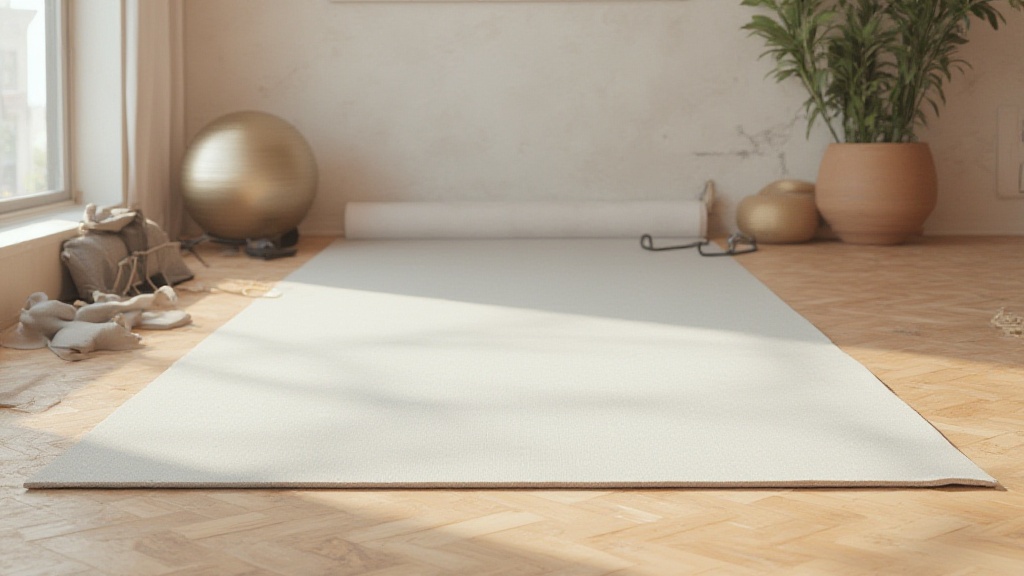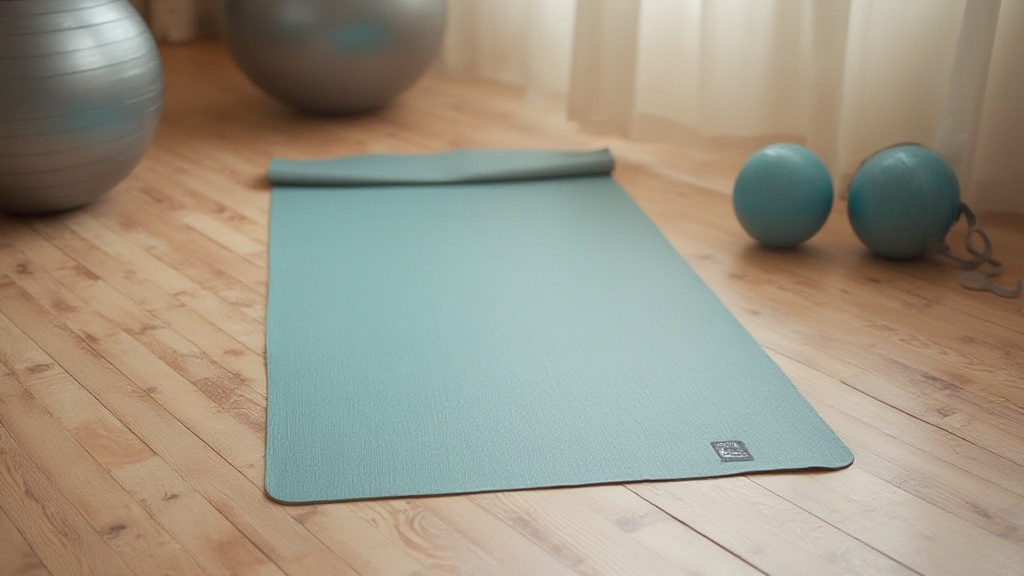
Engaging in senior fitness balance routines enhances overall stability. Such routines promote independence maintenance and significantly reduce the risk of falls, which remains a primary concern for older adults.
Balance exercises not only fortify the body’s proprioception but also build core strength, essential for maintaining mobility.
Regular participation leads to increased confidence in physical activities, enabling seniors to remain active and engaged in their communities.
Participating in these routines can elevate seniors’ quality of life, fostering greater health outcomes.
Importance Of Balance Exercises For Seniors
Balance exercises serve as fundamental components for improving functional mobility in seniors. These exercises enhance stability training, which complements traditional strength workouts and offers overall health benefits.
Research highlights that seniors who engage in regular balance routines experience a notable reduction in fall risk.
For beginners, starting with simple standing exercises like toe raises and tandem stands can ease the transition into more complex movements.
Gradually increasing practice frequency is essential to maximize effectiveness, establishing a strong foundation in balance, which is a key element of fall prevention strategies.

How Can Stability Training Enhance Mobility
Stability training serves as a fundamental component for enhancing mobility, particularly among older adults seeking to maintain their independence. This form of training focuses on improving coordination and overall body control, which links closely to strength exercises discussed in previous sections.
Research consistently demonstrates that engaging in stability training can significantly enhance daily activities, such as walking and climbing stairs.
For instance, a study published in the Journal of Aging and Physical Activity revealed that participants who incorporated stability training into their routines reported enhanced functional mobility.
To begin at home, consider incorporating stability balls or balance boards into your fitness regimen, as they can be easily integrated into a variety of routines.
Benefits of Stability Training
- Improved coordination for daily activities
- Enhanced body awareness and control
- Increased confidence in performing mobility exercises
Incorporating stability training can lead to a more active lifestyle, promoting long-term health and independence among older adults.
Core Strength And Fall Prevention Benefits
Establishing core strength plays a significant role in enhancing athletic performance and everyday movements. Research indicates that a strong core significantly reduces the risk of falls, a pressing concern for many seniors. Data from the National Institute on Aging shows a direct correlation between enhanced core stability and fall prevention, with a reported 30% reduction in fall incidents among older adults who regularly engage in core-strengthening exercises. In particular, a beginner-friendly exercise to incorporate is the plank, which not only targets the core but also promotes overall balance and posture improvement.
Incorporating Core Exercises
The plank exercise can be adapted for various fitness levels and offers numerous benefits, such as:.
- Improved stability and balance
- Enhanced mobility through core engagement
- Support in fall prevention efforts
Regular practice of planks, alongside other stability exercises, contributes to better mobility, allowing older adults to navigate their environments with greater ease and fewer falls.
Stability Training and Core Strength
- Stability training improves coordination, enhancing daily activities like walking and climbing stairs.
- Participants in stability training reported enhanced functional mobility, according to research in the Journal of Aging and Physical Activity.
- Engaging in core-strengthening exercises can lead to a 30% reduction in fall incidents among older adults.
- The plank exercise is adaptable for various fitness levels and promotes overall balance and posture improvement.
Effective Geriatric Fitness Routines For Independence
Structured geriatric fitness routines play an essential role in enhancing physical health and achieving long-term independence. Research indicates that engaging in regular exercise significantly reduces the risk of falls, thereby promoting overall safety for older adults.
A well-designed weekly schedule should incorporate a variety of physical activities, including cardiovascular workouts, strength training, and flexibility drills.
For instance, starting the week with a brisk walk on Monday, incorporating resistance band exercises on Wednesday, and concluding with yoga or Tai Chi on Friday can create a balanced routine.
These diverse exercises not only boost strength and mobility but also support active aging, empowering seniors to maintain independence.
Weekly Scheduling for Optimal Results
To effectively implement geriatric fitness, consider the following scheduling tips:.
- Cardiovascular Fitness: Aim for at least three sessions per week, which may include walking programs or low-impact aerobics.
- Strength Workouts: Include strength training exercises with resistance bands or light weights twice a week to improve core strength.
- Flexibility Drills: Incorporate dynamic stretches or yoga for seniors to enhance mobility and reduce injury risk.
- Active Recovery: Leave space for rest days and lighter exercises, ensuring the body has time to recover.
Chair Workouts For Improved Balance
Chair workouts serve as an effective entry point for seniors seeking to enhance their stability and strength. These exercises provide a safe and accessible means to engage in physical activity, particularly for those who may struggle with mobility. A specific example of an effective chair workout is the seated leg lift, which promotes core strength and stability. To perform this exercise, sit up straight in a sturdy chair with feet flat on the floor. Then, extend one leg out in front, holding it for a few seconds before lowering it back down. This routine not only builds strength but also prepares seniors for more advanced movements, ultimately enhancing their overall functional fitness.
Benefits of Chair Workouts
Engaging in chair workouts contributes to:.
- Balance Exercises: These routines improve overall stability, reducing fall risks.
- Injury Prevention: Building strength in a controlled environment helps minimize injury chances.
- Accessibility: Chair workouts provide a gateway for seniors to progress to more challenging movements.
By incorporating these elements into a fitness routine, seniors can achieve significant improvements in their physical health, coordination training, and overall well-being, thus maintaining their independence as they age gracefully.
| Fitness Component | Recommended Frequency | Benefits |
|---|---|---|
| Cardiovascular Fitness | At least 3 sessions per week | Reduces risk of falls, improves heart health |
| Strength Workouts | Twice a week | Enhances core strength, supports mobility |
| Flexibility Drills | Incorporate regularly | Improves mobility, reduces injury risk |
| Chair Workouts | As needed for balance and strength | Accessible, promotes stability, prepares for advanced movements |
Tai Chi As A Mindful Movement Practice
Practicing mindful movement through Tai Chi promotes mental health by integrating slow, deliberate motions. This age-old technique enhances body awareness, leading to a stronger connection between the mind and body.
Research published in the Journal of Geriatric Physical Therapy indicates that Tai Chi significantly reduces fall risks among seniors, underscoring its essential role in balance exercises.
A study from the National Center for Complementary and Integrative Health reveals that participants who practice Tai Chi regularly demonstrate notable improvements in postural stability.
For those interested in embarking on this enriching journey, enrolling in local classes or exploring online resources offers a structured way to initiate your practice.
Flexibility Drills To Support Functional Mobility
Engaging in flexibility drills plays a significant role in supporting functional mobility and overall well-being. Numerous studies, including one from the Journal of Aging and Physical Activity, indicate that enhanced flexibility can lead to improved performance in strength workouts and other exercises for older adults.
By committing to daily stretching routines, seniors can effectively reduce muscle stiffness, thereby enabling increased participation in diverse mobility exercises. A simple routine targeting major muscle groups includes:
- Neck Stretch: Gently tilt the head to each side, holding for 15-30 seconds.
- Shoulder Stretch: Bring one arm across the body, holding it with the opposite hand.
- Hamstring Stretch: While seated, extend one leg and reach for the toes.
Consistent practice of these stretches is essential for enhancing flexibility and effectively supporting daily activities.
| Practice | Benefits |
|---|---|
| Tai Chi | Reduces fall risks among seniors |
| Tai Chi | Improves postural stability |
| Flexibility Drills | Enhances performance in strength workouts |
| Stretching Routines | Reduces muscle stiffness |
Safety Measures In Senior Fitness Programs
Ensuring participant safety during senior fitness programs is essential for fostering positive health outcomes. Tailored fitness plans that account for individual mobility challenges and health conditions can significantly enhance safety during workouts.
Best practices include conducting thorough pre-participation health screenings to identify any risks related to specific exercises.
Providing clear instructions and ongoing supervision keeps participants engaged while minimizing potential injuries.
A critical tip is to emphasize proper footwear, as supportive shoes enhance stability and balance.
This simple yet effective measure can prevent falls, allowing seniors to enjoy their fitness routines with confidence.
Best Practices for Ensuring Safety
Implementing effective safety measures involves several strategies aimed at promoting health and wellness among seniors. Balance exercises and stability training should be integral components of fitness programs, helping to reduce the risk of falls.
Additionally, core strength development is essential for fall prevention and maintaining functional mobility.
Offering a variety of group classes that focus on low-impact exercises and gentle movements ensures that seniors can participate according to their individual capabilities. Examples include Tai Chi, yoga for seniors, and chair workouts, which provide safe environments for enhancing flexibility and mobility.
“Safety, along with enjoyment, can significantly enhance adherence to fitness routines among older adults. ”
Regular health monitoring can identify any changes in a senior’s condition, enabling timely adjustments to their fitness plans.
Hydration and proper nutrition play significant roles in injury prevention, ensuring that seniors maintain their energy levels during workouts.
Encouraging mindful movement practices also helps promote awareness of body mechanics, improving posture and reducing the likelihood of injuries.
By prioritizing these safety measures in senior fitness programs, participants can engage more confidently in their health and wellness journeys, promoting active aging and long-term health benefits.
| Safety Measure | Benefit |
|---|---|
| Tailored fitness plans | Enhances safety by addressing individual mobility challenges |
| Balance and stability training | Reduces the risk of falls |
| Regular health monitoring | Allows for timely adjustments to fitness plans |
| Mindful movement practices | Improves posture and reduces injury likelihood |
